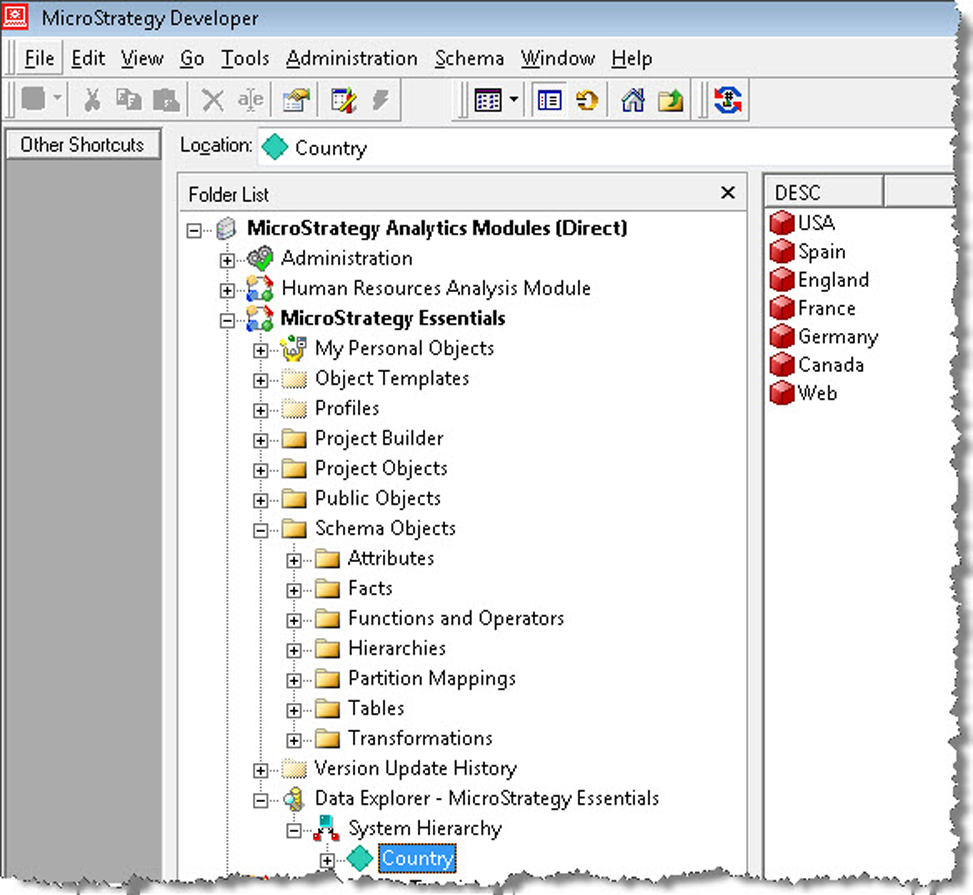MicroStrategy Hierarchies are Schema Objects made of Attributes, which serve two main purposes:
- Help to visualize and understand the relationships between the Attributes
- Define paths for users to drill (drill maps and drill paths)
The following is a quick reference table for this MicroStrategy Object:

If you navigate to the Data Explorer, you will find the first Hierarchy that is created by default once the first Attribute is saved into the Project—System Hierarchy, as shown in the next screenshot:

System Hierarchy
The System Hierarchy will show all the Attributes in the project with their relationships and their Attribute elements. The Attribute elements are simply the data inside the lookup tables. It is important to note that the Attribute elements are not Objects but data instead.
The Architect can define user Hierarchies and make them available for final users as drill paths to perform data discovery and further analysis on Reports. In the next exercise...



